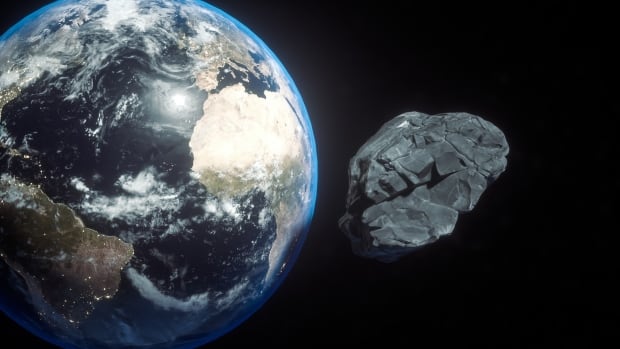There’s a lot of debris in our solar system, and every so often we get to see it — meteors streaking against a starry sky, a bright comet or a passing asteroid. And sometimes, Earth temporarily grabs hold of one of these asteroids and keeps it around a little bit longer.
That’s what’s happening later this month. Asteroid 2024 PT5 is passing so close that it will temporarily join Earth and essentially become a “mini-moon.”
This happens once in a while with near-Earth objects, or NEOs, due to their path and somewhat slow velocity. They can stay trapped here for days or months. Some don’t even complete one full revolution around Earth. Eventually, they break away.
In the case of 2024 PT5, it is expected to be captured by Earth from Sept. 29 until Nov. 25. Afterward, it will remain in the neighbourhood — near Earth — until some time after Jan. 9, 2025.
Newly-discovered <a href=”https://twitter.com/hashtag/asteroid?src=hash&ref_src=twsrc%5Etfw”>#asteroid</a> 2024 PT5 is about to undergo a “mini-moon event” when its geocentric energy becomes negative from September 29 – November 25.<a href=”https://t.co/sAo1qSRu3J”>https://t.co/sAo1qSRu3J</a> <a href=”https://t.co/pVYAmSbkCF”>pic.twitter.com/pVYAmSbkCF</a>
—@tony873004
The last time we had a mini-moon was in 2022. Asteroid 2022 NX1 became a mini-moon for a few months that year and is believed to have previously been captured by Earth in 1981. We also had another mini-moon briefly in 2020.
Sometimes these objects are artificial. No, not alien, but man-made objects such as spent Apollo stages from past human lunar explorations. But this doesn’t appear to be the case with 2024 PT5.
“I think most people are pretty convinced that that it is real, but it hasn’t been confirmed yet,” said Paul Wiegert, a professor at Western University’s department of physics and astronomy in London, Ont. “It has some behaviour like some other natural objects, which we’ve seen [and] it’s more consistent with the natural object than a piece of space junk.”
Technically speaking, 2024 PT5 — which was discovered on Aug. 7 by the Asteroid Terrestrial-impact Last Alert System (ATLAS) — doesn’t qualify as a moon as it won’t complete a full revolution of Earth. Instead, it will come in, circle around during the two months, and then be released.
Asteroids like this come from the main asteroid belt, located between Mars and Jupiter, where they spend most of their lives, Wiegert said.
“They can sometimes escape and become part of what we call the near-Earth asteroid population,” Wiegert said. “So these are the ones that we worry might hit Earth and cause some damage. This one is on a very safe orbit. It will not hit Earth.”
There’s also a potential that this was something that was ejected from the moon.
But if you think we’ll get a two-moon sky, it’s not the case: 2024 PT5 measures just roughly 10 metres in diameter, making it far too dim for anyone hoping to catch a glimpse. However, it’s likely that large telescopes will be able to see it.
But it does serve as a reminder that we live in a cosmic shooting gallery.
“It’s a very cool object, and it’s always interesting when something new comes along. Scientifically, we’re not going to learn very much from this,” Wiegert said. “It’s not the scientific event of the year or anything like that, but it’s one of the many interesting things that are constantly going around us in space.”


